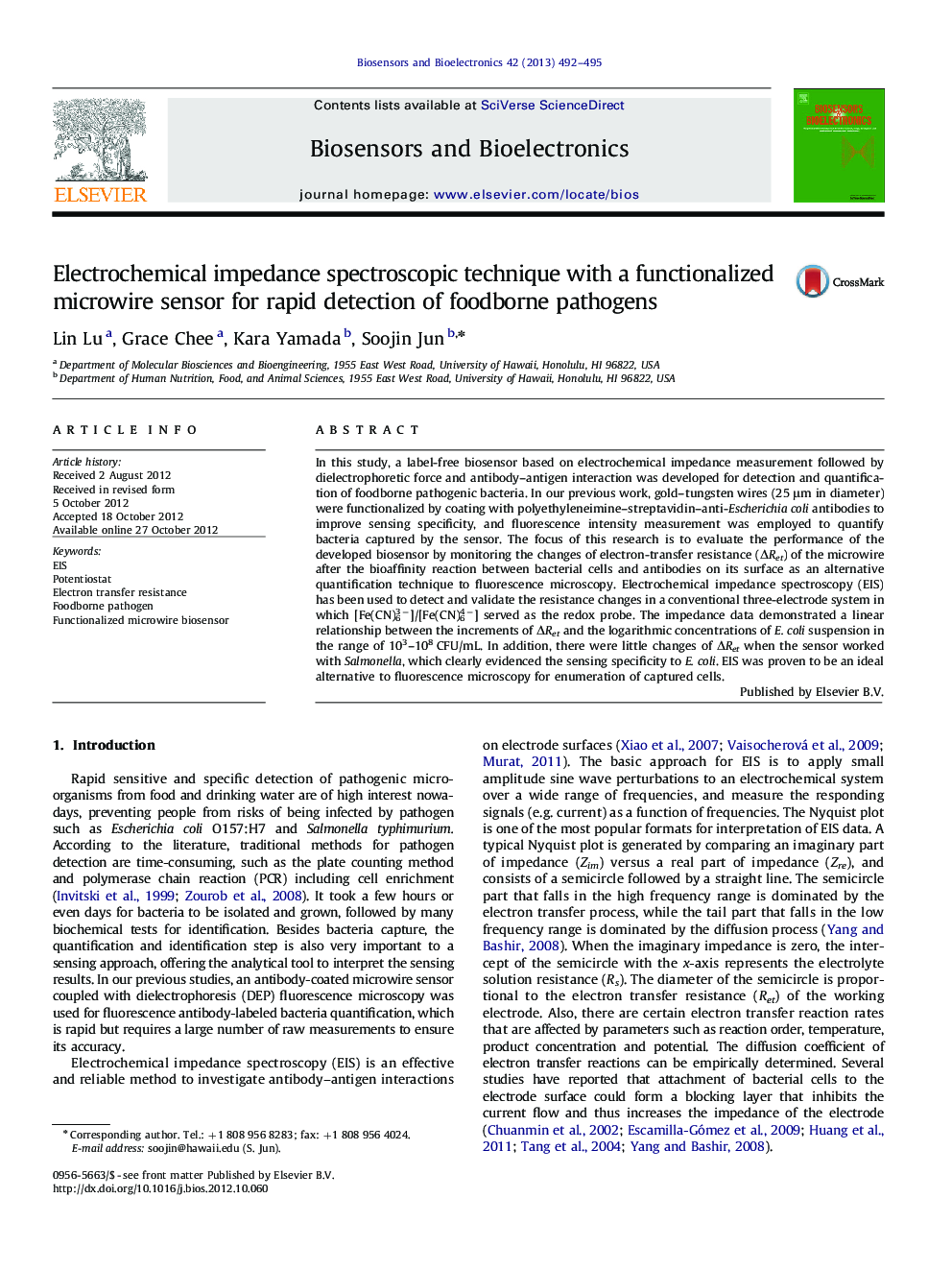| کد مقاله | کد نشریه | سال انتشار | مقاله انگلیسی | نسخه تمام متن |
|---|---|---|---|---|
| 867129 | 1470989 | 2013 | 4 صفحه PDF | دانلود رایگان |

In this study, a label-free biosensor based on electrochemical impedance measurement followed by dielectrophoretic force and antibody–antigen interaction was developed for detection and quantification of foodborne pathogenic bacteria. In our previous work, gold–tungsten wires (25 μm in diameter) were functionalized by coating with polyethyleneimine–streptavidin–anti-Escherichia coli antibodies to improve sensing specificity, and fluorescence intensity measurement was employed to quantify bacteria captured by the sensor. The focus of this research is to evaluate the performance of the developed biosensor by monitoring the changes of electron-transfer resistance (ΔRet) of the microwire after the bioaffinity reaction between bacterial cells and antibodies on its surface as an alternative quantification technique to fluorescence microscopy. Electrochemical impedance spectroscopy (EIS) has been used to detect and validate the resistance changes in a conventional three-electrode system in which [Fe(CN)63−]/[Fe(CN)64−] served as the redox probe. The impedance data demonstrated a linear relationship between the increments of ΔRet and the logarithmic concentrations of E. coli suspension in the range of 103–108 CFU/mL. In addition, there were little changes of ΔRet when the sensor worked with Salmonella, which clearly evidenced the sensing specificity to E. coli. EIS was proven to be an ideal alternative to fluorescence microscopy for enumeration of capturedcells.
► Rapid and accurate single step detection of foodborne pathogens.
► Validated sensitivity and specificity of the developed sensors.
► Quantitative analysis of bacterial cells using the electrochemical impedance spectroscopic technique.
► Can be used for food and water quality control and management.
Journal: Biosensors and Bioelectronics - Volume 42, 15 April 2013, Pages 492–495